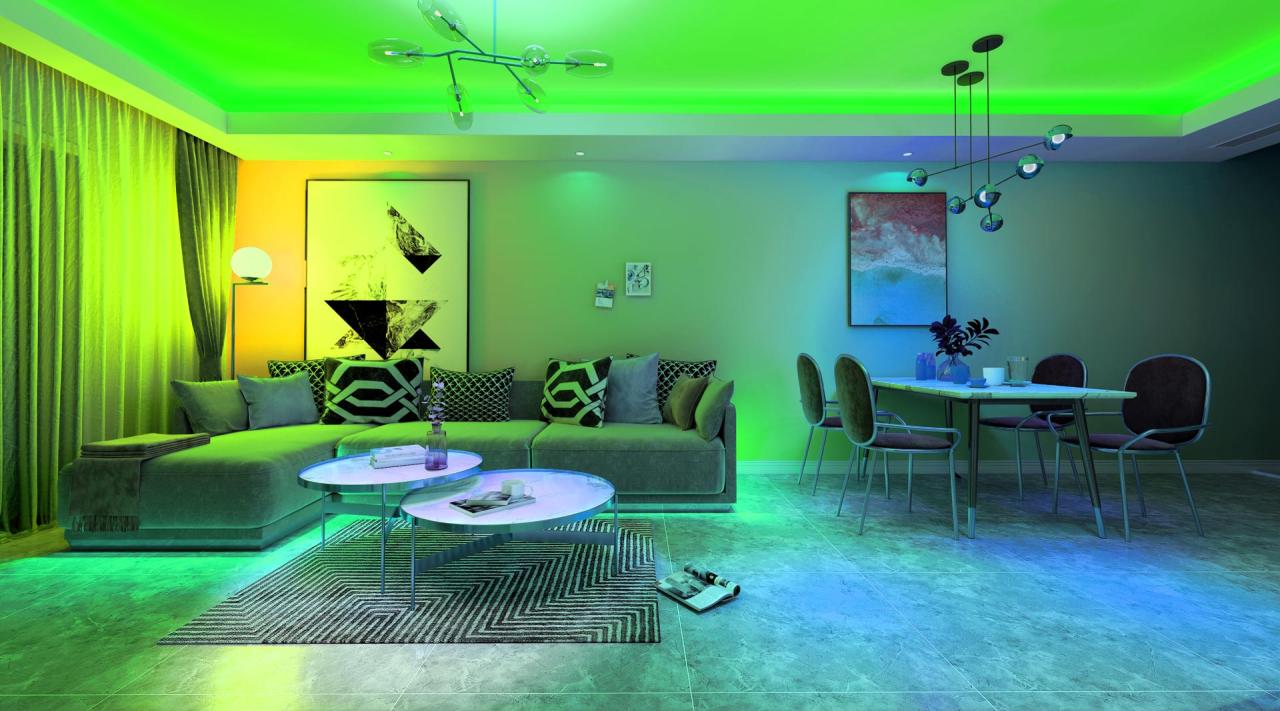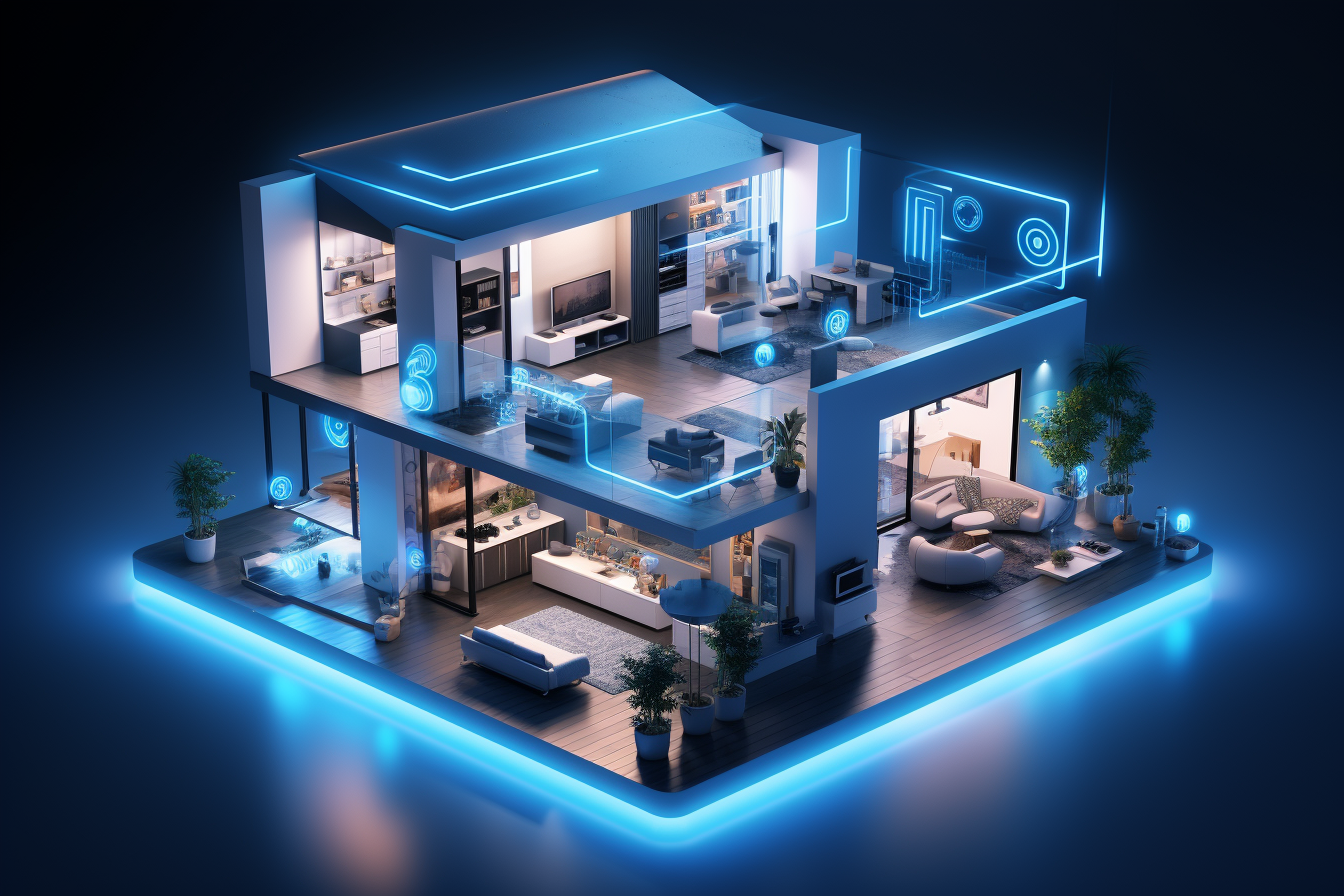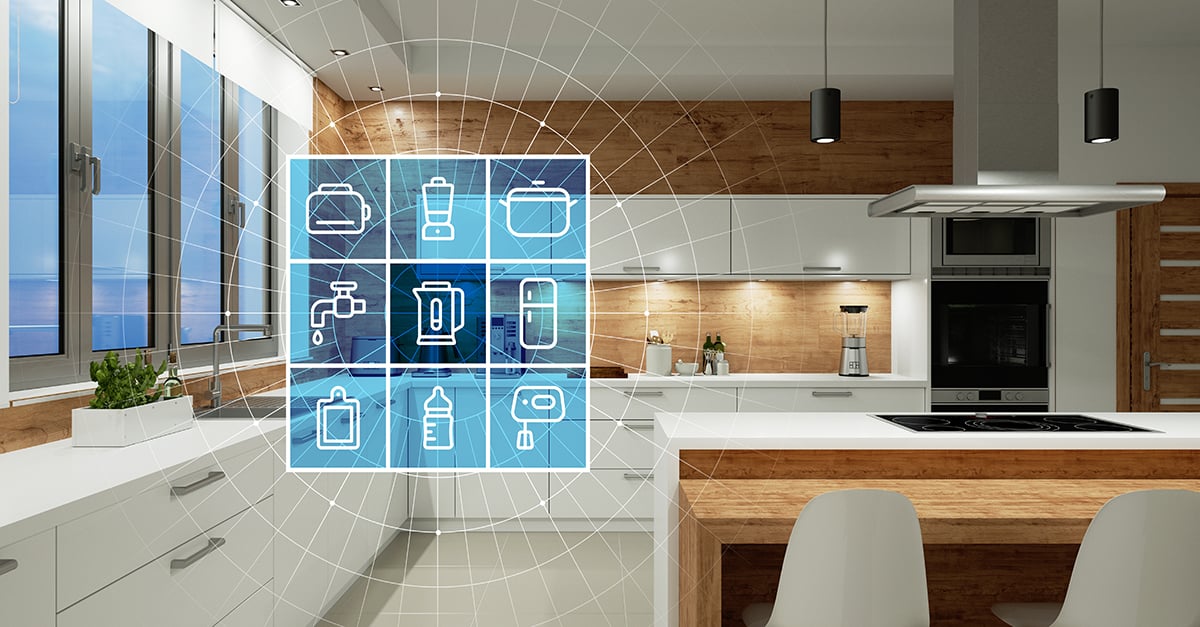Embark on a journey exploring the world of smart lighting solutions, where innovation meets efficiency to brighten up your surroundings. From reducing energy consumption to enhancing convenience, these cutting-edge technologies are revolutionizing the way we illuminate our spaces.
Introduction to Smart Lighting Solutions
Smart lighting solutions refer to the use of technology to control lighting in an automated and intelligent way. These solutions offer a wide range of benefits, making them increasingly popular in homes, offices, and public spaces.
Examples of Smart Lighting Technologies
- Smart LED bulbs: These bulbs can be controlled remotely through a smartphone app, allowing users to adjust brightness, color, and schedule lighting.
- Motion sensor lights: Lights equipped with motion sensors automatically turn on when someone enters a room and turn off when there is no movement detected.
- Smart switches and dimmers: These devices enable users to control multiple lights simultaneously and adjust brightness levels to create the desired ambiance.
Benefits of Using Smart Lighting Solutions
- Energy efficiency: Smart lighting technologies can help reduce energy consumption by automatically turning off lights when not in use or adjusting brightness based on natural light levels.
- Convenience: The ability to control lighting remotely or set schedules makes it convenient for users to customize their lighting preferences without the need to manually adjust switches.
- Safety and security: Motion sensor lights and programmable schedules enhance safety by illuminating pathways or deterring intruders when occupants are away.
- Enhanced ambiance: Smart lighting solutions offer the flexibility to create different lighting moods for various activities, such as relaxing, working, or entertaining.
Types of Smart Lighting Systems: Smart Lighting Solutions
Smart lighting systems come in various types, each offering unique features and benefits that cater to different needs and preferences. Let’s explore some of the most popular options available in the market.
Wi-Fi Enabled Smart Lighting Systems
Wi-Fi enabled smart lighting systems allow users to control their lights remotely through a smartphone app or voice commands. These systems offer a high level of flexibility and customization, as users can easily adjust the brightness, color, and scheduling of their lights. Additionally, Wi-Fi enabled systems typically integrate with other smart home devices, creating a seamless smart home experience.
Bluetooth-Enabled Smart Lighting Systems
Bluetooth-enabled smart lighting systems are another popular choice for those looking to automate their lighting. These systems connect directly to your smartphone or tablet via Bluetooth, eliminating the need for a hub or bridge. While Bluetooth systems may have a slightly shorter range compared to Wi-Fi systems, they are often more energy-efficient and cost-effective.
Voice-Controlled Smart Lighting Solutions
Voice-controlled smart lighting solutions, such as those compatible with virtual assistants like Amazon Alexa or Google Assistant, offer a hands-free way to control your lights. By simply speaking commands like “turn on the lights” or “dim the living room,” users can effortlessly adjust their lighting settings without lifting a finger. This feature adds a level of convenience and accessibility to smart lighting systems, making them even more user-friendly.
Installation and Setup of Smart Lighting
When it comes to installing and setting up smart lighting systems in homes or offices, there are a few key steps to follow to ensure optimal performance.
Installation Process
- Start by choosing the right smart lighting system for your needs, whether it’s a smart bulb, smart switch, or smart lighting kit.
- Follow the manufacturer’s instructions carefully to install the smart lighting hardware, such as replacing traditional bulbs with smart bulbs or wiring smart switches.
- Connect the smart lighting system to your home network using the designated app or hub provided by the manufacturer.
- Ensure that all devices are properly synced and configured to work together seamlessly.
Tips for Setting Up Smart Lighting Networks
- Position the smart hub or main control unit in a central location to ensure optimal connectivity throughout your home or office.
- Consider grouping smart lights into zones or rooms for easier control and customization.
- Create schedules or scenes to automate lighting based on your daily routines or preferences.
- Regularly update the firmware of your smart lighting devices to ensure security and performance enhancements.
Common Troubleshooting Issues
- If you encounter connectivity issues, try rebooting your smart hub or router to refresh the connection.
- Check for any firmware updates for your smart lighting devices and install them to resolve compatibility issues.
- Ensure that all devices are within the range of your home network to avoid signal interference or dropouts.
- If you are still experiencing problems, reach out to the manufacturer’s customer support for further assistance.
Energy Efficiency and Cost Savings

Smart lighting solutions play a crucial role in reducing energy consumption and ultimately leading to cost savings for users. By optimizing the use of lighting in homes, offices, and public spaces, these systems offer a range of benefits that contribute to a more sustainable and economical environment.
Reduction in Energy Consumption
- Smart lighting systems utilize LED technology, which is significantly more energy-efficient than traditional incandescent bulbs.
- Features such as motion sensors, timers, and dimming capabilities help to minimize unnecessary lighting usage.
- Remote access and control allow users to monitor and adjust lighting settings efficiently, preventing energy wastage.
Cost Savings through Smart Lighting, Smart lighting solutions
- Lower energy consumption directly translates to reduced electricity bills for households and businesses.
- Long-lasting LED bulbs require less frequent replacements, saving on maintenance and replacement costs.
- The ability to customize lighting schedules and intensity leads to optimized usage patterns, further lowering expenses.
Long-Term Financial Benefits
- Initial investments in smart lighting solutions are offset by long-term savings on energy bills, making it a financially wise decision.
- Increased energy efficiency contributes to a more sustainable environment, aligning with green initiatives and potentially qualifying for rebates or incentives.
- As technology advances, smart lighting systems are becoming more affordable, offering an accessible option for all consumers to benefit from cost-effective lighting solutions.
Integration with Smart Home Ecosystem
Smart lighting solutions can be seamlessly integrated with other smart home devices, creating a cohesive ecosystem that offers enhanced convenience, comfort, and efficiency for homeowners. By connecting smart lighting systems with other smart devices such as smart thermostats, security cameras, and voice assistants, users can enjoy a fully automated and interconnected living space.
Advantages of a Cohesive Smart Home Ecosystem with Lighting Control
- Enhanced Convenience: With a cohesive smart home ecosystem, users can control their lighting, temperature, security, and entertainment systems seamlessly through a single interface or voice commands.
- Improved Energy Efficiency: Integration with smart home devices allows for intelligent automation of lighting based on occupancy, natural light levels, and user preferences, leading to energy savings and reduced environmental impact.
- Enhanced Security: Smart lighting integration with security cameras and sensors enables users to create custom lighting schedules or trigger lights remotely to deter intruders or create the illusion of occupancy when away from home.
Popular Smart Home Platforms Supporting Smart Lighting Integration
- Amazon Alexa: Amazon’s voice assistant platform allows users to control smart lighting systems from various brands through voice commands or the Alexa app.
- Google Assistant: Google Assistant offers seamless integration with smart lighting products, enabling users to control lights, set schedules, and create custom lighting scenes using voice commands or the Google Home app.
- Apple HomeKit: HomeKit provides a secure and convenient way to control smart lighting devices using Siri voice commands, the Home app, or automation based on triggers from other smart home accessories.
Clarifying Questions
How do smart lighting solutions contribute to energy efficiency?
Smart lighting solutions utilize advanced technology such as sensors and timers to optimize energy usage, reducing waste and lowering energy bills.
Can smart lighting systems be controlled remotely?
Yes, many smart lighting systems offer remote control options through mobile apps or voice assistants, allowing users to adjust settings from anywhere.
What are the key benefits of integrating smart lighting with other smart home devices?
Integrating smart lighting with other devices enables seamless automation and synchronization, enhancing overall convenience and efficiency in managing your smart home ecosystem.











